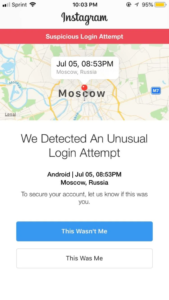Quantum computing is poised to transform many industries—but perhaps none more critically than cybersecurity. For business leaders, legal professionals, and IT experts, the time to understand and prepare for the implications of quantum technology is now. This article explores what quantum computing is, how it threatens current encryption methods, and what organizations should do to stay ahead of the risks.
What Is Quantum Computing?
Traditional computers use binary digits—bits—to process information. Each bit is either a 0 or a 1, like a light switch being off or on. Whether it’s browsing the web or streaming video, all digital operations are built from sequences of these on-off bits.
Quantum computers, by contrast, operate with quantum bits, or qubits. Unlike regular bits, qubits can exist in a state of 0, 1, or both simultaneously, thanks to a quantum principle called superposition. Imagine spinning a coin: until it lands, it’s both heads and tails. Similarly, a qubit can represent multiple possibilities at once, allowing quantum computers to process information in parallel rather than step-by-step.
Another quantum property, entanglement, connects qubits in a way that measuring one instantly reveals the state of the other—no matter how far apart they are. This coordination allows quantum systems to reduce the steps needed for complex computations, solving problems that would take classical computers thousands of years.
Quantum computers are still in their early stages, but progress by tech giants like IBM and Google indicates that practical applications may soon be within reach. The most urgent concern? The impact of quantum computing on encryption, the cornerstone of data security in the digital world.
How Today’s Encryption Works
Modern encryption protects nearly every digital interaction—from sending emails and logging into accounts to securing online transactions. Encryption scrambles data so that only authorized parties with a “key” can read it. The two primary types of encryption are:
Symmetric Encryption
This method uses a single, shared key to both encrypt and decrypt data. It’s efficient and widely used in applications like file storage and secure internet connections. However, it poses a key distribution challenge: if the secret key is intercepted, the encryption is compromised.
Asymmetric Encryption
Also known as public-key cryptography, this approach solves the key-sharing problem by using a public key to encrypt data and a private key to decrypt it. Common algorithms like RSA, ECC, and Diffie-Hellman underpin the security of online services. RSA, for instance, relies on the difficulty of factoring large prime numbers—something classical computers can’t efficiently do.
These encryption methods assume certain mathematical problems are practically unsolvable in a reasonable timeframe using current computers. But quantum computing changes the game.
Why Quantum Computing Threatens Encryption
Quantum computers can tackle these “unsolvable” problems by running massive calculations simultaneously. Shor’s algorithm, developed in 1994, allows a quantum computer to efficiently factor large numbers—effectively breaking RSA encryption. Once quantum computers are powerful enough, they could also compromise ECC and Diffie-Hellman, jeopardizing global digital security.
Even though such powerful quantum computers don’t yet exist, the threat is real and growing. Adversaries are already engaging in “store-now, decrypt-later” tactics—collecting encrypted data today in hopes of decrypting it with quantum tools in the future. This poses a major risk for long-term confidentiality, especially in sectors handling sensitive personal, commercial, or government data.
Regulatory Responses to the Quantum Threat
Governments are beginning to treat the quantum risk as a matter of national and economic security. Both the European Union and the United States are actively developing policy frameworks to guide the shift toward post-quantum cryptography (PQC).
The EU Approach
The EU’s General Data Protection Regulation (GDPR) already requires organizations to implement “state of the art” security measures. As quantum technology advances, this will likely mean using quantum-resistant encryption to remain compliant.
Recent EU actions include:
- April 2024: The European Commission published a recommendation urging Member States to coordinate efforts on PQC adoption.
- December 2024: Cybersecurity agencies from 18 Member States called on all sectors—including public agencies, infrastructure, and private industry—to begin PQC migration now, emphasizing the need to address “store-now, decrypt-later” risks by 2030.
- ENISA Guidance: The EU’s cybersecurity agency has published technical recommendations for integrating quantum-safe encryption and is expected to monitor industry progress.
The overarching message from the EU is clear: the transition to PQC must begin now to avoid future security crises.
The U.S. Approach
The United States has taken a similarly proactive stance:
- Quantum Computing Cybersecurity Preparedness Act (2022): Requires federal agencies to inventory vulnerable systems and prepare for PQC migration.
- National Institute of Standards and Technology (NIST): Finalized three PQC standards (FIPS 203, 204, and 205) in 2024, now ready for implementation.
- NSA and DHS Initiatives: Issued updated encryption requirements and roadmaps to support the public and private sector transition.
- CISA’s Post-Quantum Cryptography Initiative (2024): Focused on assisting critical infrastructure and government networks through the quantum transition.
Together, these efforts underscore the urgent need to adapt encryption standards before quantum computing becomes a widespread threat.
Preparing for the Quantum Future: Legal, Technical, and Business Strategies
Transitioning to quantum-safe encryption isn’t just a technical challenge—it requires coordination across legal, business, and IT departments.
Legal Considerations
Businesses must stay informed of evolving laws and industry standards related to data protection and encryption. Even in the absence of quantum-specific mandates, regulations like the GDPR place the responsibility on organizations to adopt appropriate security measures.
Key legal steps include:
- Updating governance documents and policies to reflect quantum risks.
- Revising contracts with vendors and partners to ensure encryption standards evolve together.
- Embedding quantum resilience into risk management frameworks and compliance strategies.
Technical and Operational Priorities
- Risk Assessment & Cryptographic Inventory: Identify where encrypted data resides, how it’s protected, and which assets are most vulnerable to quantum threats.
- Workforce Training: Equip developers, IT teams, and security staff with the knowledge needed to implement quantum-safe solutions.
- Collaboration: Partner with cloud providers, cybersecurity vendors, and industry consortia to test and adopt post-quantum tools.
- Agility: Adopt cryptographic agility—design systems that can be easily updated as new encryption standards emerge.
Organizations that treat quantum risk as a strategic business challenge will be better equipped to protect their systems and data as the threat landscape evolves.
Real-World Progress and Industry Momentum
Quantum readiness is no longer hypothetical. Industry leaders are already taking steps to implement PQC:
- Amazon Web Services (AWS) has launched a phased plan to integrate quantum-safe encryption into its infrastructure.
- Google is using post-quantum algorithms to protect its internal network traffic.
- Financial Institutions—under pressure from forums like Europol’s Quantum Safe Financial Forum—are moving to adopt quantum-resilient systems due to the high stakes of data confidentiality.
These examples show that the transition to post-quantum security is underway, and early adopters are setting the standard for resilience and trust.
Conclusion
Quantum computing presents a real and imminent threat to today’s encryption-based cybersecurity systems. While the technology is still evolving, the risk it poses to long-term data protection is already driving legal, technical, and business responses.
Organizations that begin planning, testing, and investing in quantum-resistant cryptography now will be far better positioned to withstand future disruptions. The time to act is not when the threat arrives—it’s now, while there’s still time to prepare.









